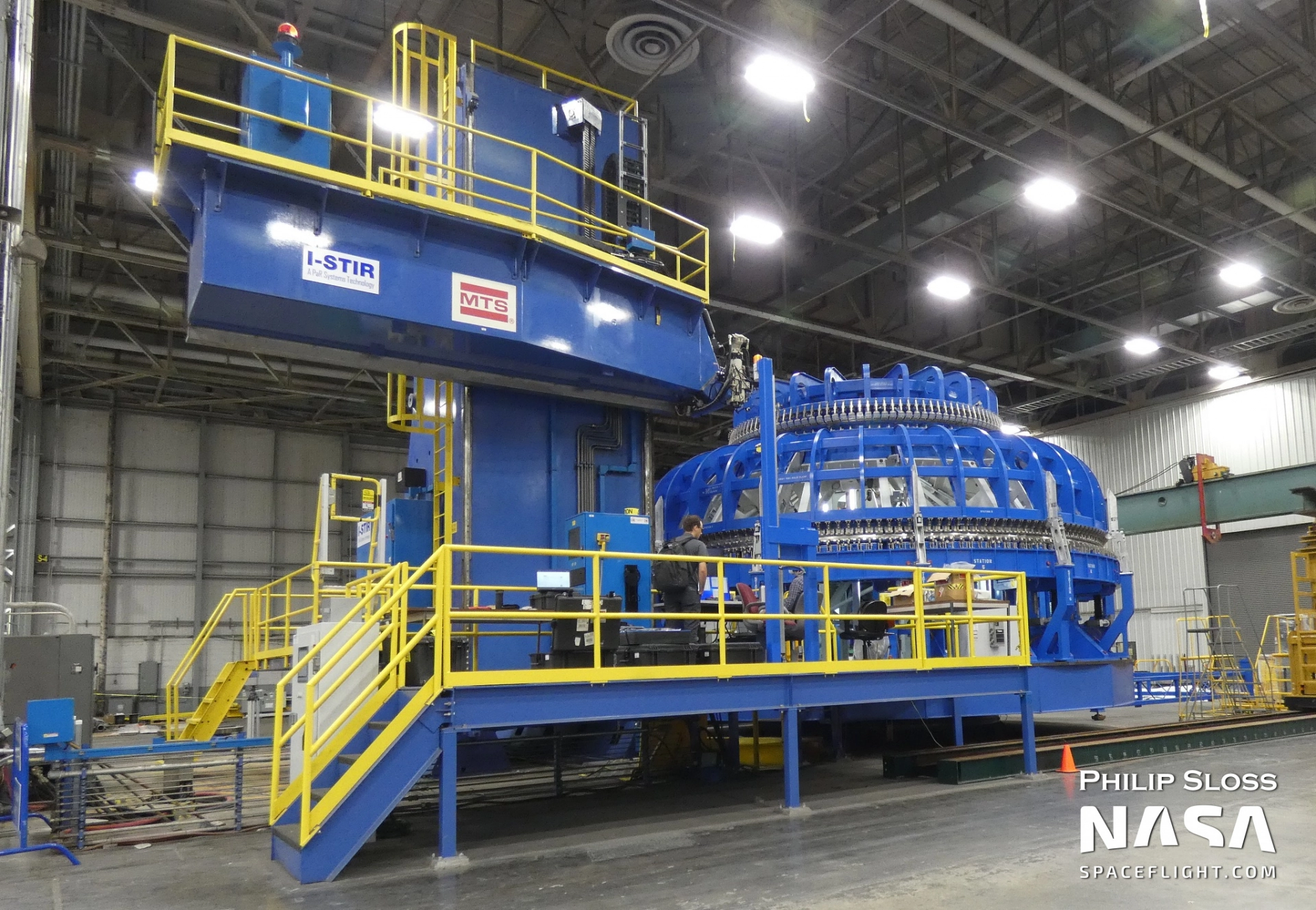Futuramic is proud of our contributions to the SLS, Boeing, and NASA. Over the last ten years Futuramic has made numerous friction stir weld tools, assembly tools, platforms, overhead lift devices, and structural simulators for use by The Boeing Company in the construction of NASA’s Space Launch System rocket at NASA Michoud Assembly Facility. Some of them are prominently displayed in this article from NASASpaceflight.com about the ongoing assembly being done for Artemis 3 and 4.
SLS Stages in assembly at MAF for future NASA Artemis launches
Original Article From NASASpaceflight.com
Article appeared August 1, 2022.
Boeing, the prime Stages contractor for NASA’s Space Launch System (SLS) program, is working on the production and development of hardware for the third and fourth Artemis launches at the Michoud Assembly Facility (MAF) in New Orleans. Welded and bolted structures for the third and fourth Core Stage vehicles are being assembled in parallel with preparations to begin the initial production of the new Exploration Upper Stage (EUS).
Structural assembly of four of the five main Core Stage-3 elements is complete and Boeing has begun the long-lead engine section structure for Core Stage-4. Simultaneously, weld development for EUS continues before the assembly of first flight structures and the new production area in the middle of the factory is being staged for the upcoming arrival of tooling to build the upper stage.
Core Stage-3 structures nearing completion
Boeing is currently working on the assembly and production of the next three Core Stages at Michoud. In addition to the final assembly of Core Stage-2, which is targeted for delivery in March, the structural assembly of Core Stage-3 is almost complete and the long lead elements for Core Stage-4 are in production behind those two builds.
The liquid oxygen (LOX) tank for Core Stage-3, which is assigned to the Artemis 3 SLS vehicle, is the last structure that needs to be assembled. There are five main structural elements for a Core Stage, a forward skirt, LOX tank, intertank, liquid hydrogen (LH2) tank, and engine section.
Beginning with this third flight article build, procurement and production of the engine section was started first as the “long lead” element of the stage. The engine section, where the powerheads of the four RS-25 engines and all the supporting Main Propulsion System (MPS) equipment comes together, is the most complicated element of the SLS vehicle as a whole and the Core Stage specifically.
The structure of the element consists of a welded barrel and a bolted thrust structure, which are then bolted together in a floor assembly jig (FAJ). While thousands of bolts are added structurally to integrate the barrel and the thrust structure in the jig, some secondary structures like brackets to hold electrical wiring and other equipment are also added during this phase of assembly.
“They’re putting all of the brackets and some of the odds and ends that you want to do before you start putting all of the other hardware inside,” Eric Potter, Boeing’s Core Stage 4 Integrated Product Team Lead, said during interviews with NASASpaceflight at MAF on July 21. “[For] Core Stage-3 we didn’t have the tubes to put in, so we’re going to travel that work to later.”
Most of the orbital tube welding of MPS tubes for hydraulics, pneumatics, and propellant, will be done after structural assembly, but some “pre-integration” work is done earlier in the production process. The engine section structure is expected to come off of the floor assembly jig in the next month or so and move into a separate work stand for the integration process.
On the opposite end of Building 103 at MAF, the other two “dry” structures, the intertank and forward skirt, are being worked on in the forward structures area. Structural assembly of the Core Stage-3 intertank is essentially complete, the work stands around the exterior of the element were pulled back at the time of the interview, and it will be moved sometime later in August to its next work center.
“They’re going to go into Cell G to do TPS (Thermal Protection System) [applications], which is about a six-month process; you have to individually do each one of those isogrids,” Potter said. The exterior of the intertank has pockets created by the intersection of circumferential and longitudinal ribs; each one of those has to be manually filled with spray-on foam insulation (SOFI)…
To read the full article please visit: NASASpaceflight.com
Photo Credit: Philip Sloss for NASASpaceflight.com



